Robert Tuttle
Tue, May 14, 2024 at 6:11 PM MDT·3 min read

(Bloomberg) -- Portions of Fort McMurray, Alberta, are being evacuated as a wildfire approaches the city, the unofficial capital of Canada’s oil sands industry that almost burned to the ground during a historic blaze eight years ago.
The 11,000 hectare (27,000 acre) blaze expanded overnight and is moving northeastward toward the the city. The fire is now about 7.5 kilometers (4.7 miles) from the Fort McMurray landfill, southwest of the city, but thick smoke is making it difficult to determine exact distances, Alberta Wildfire said in a release. Winds are blowing from the southwest, gusting as high as 40 kilometers an hour.
“This will be a challenging day for firefighters,” the agency warned, adding some had to be pulled from the fire line for safety reasons.
Rising temperatures across western Canada increased fire risk in recent days, contributing to poor air quality in Calgary over the weekend. Rain in the Fort McMurray area was supposed to ease the wildfires on Monday, but fire activity increased in the afternoon and into the evening, according to Alberta Wildfire. More than 65% of Canada was abnormally parched or in drought at the end of March, threatening another smoke-filled summer after last year’s fire season, which was Canada’s worst on record.
The Regional Municipality of Wood Buffalo, where Fort McMurray is located, declared a state of local emergency. Residents of the communities of Beacon Hill, Abasand, Prairie Creek and Grayling Terrace were ordered to evacuate. Abasand and Beacon Hill had about 6,000 residents in 2021, according to the Municipal Census Report.
Fort McMurray, in a remote and heavily forested part of the province, was ravaged by a blaze in 2016 that burned down large sections of the city, forcing thousands to evacuate and temporarily shutting more than 1 million barrels a day of oil output. The fire caused about C$3.7 billion ($2.7 billion) in insured losses, making it Canada’s costliest natural disaster.
The current fire is one of three that are listed as out of control in Alberta and the closest to the oil sands, where the bulk of Canada’s 4.9 million barrels a day of crude is produced. The fire prompted an alert Friday that put the city’s 70,000 residents on notice to be prepared to leave.
The fire isn’t currently near any major oil sands mines, but its southern perimeter is within 8 kilometers (5 miles) of Athabasca Oil Corp.’s Hangingstone well site, which produced almost 7,500 barrels of oil a day in February, Alberta Energy Regulator data show. The company didn’t respond to questions on the status of the facility.
In addition, two Inter Pipeline Ltd. natural gas liquid lines and a Pembina Pipeline Corp. crude pipeline pass through the west end of the wildfire zone, according to Alberta Energy Regulator and Alberta Wildfire data. Inter Pipeline said in an email its assets haven’t been affected, but the company is monitoring the situation. Pembina didn’t respond to an email seeking comment.
Emails to the biggest oil sands companies in the area, including Suncor Energy Inc., Canadian Natural Resources Ltd. and Imperial Oil Ltd., which operate massive oil sands mines to the north of the city, regarding the impact of the evacuations on their operations were not immediately returned.
Meanwhile, a blaze in British Columbia continues to threaten the town of Fort Nelson, on the northern edge of a major natural gas producing region. The town’s 3,000 residents are under an evacuation order and new evacuation orders and alerts were issued Monday for nearby areas.
Bloomberg Businessweek
A wildfire has forced out hundreds of residents in Canada's oil sands hub of Fort McMurray
Associated Press
Updated Tue, May 14, 2024

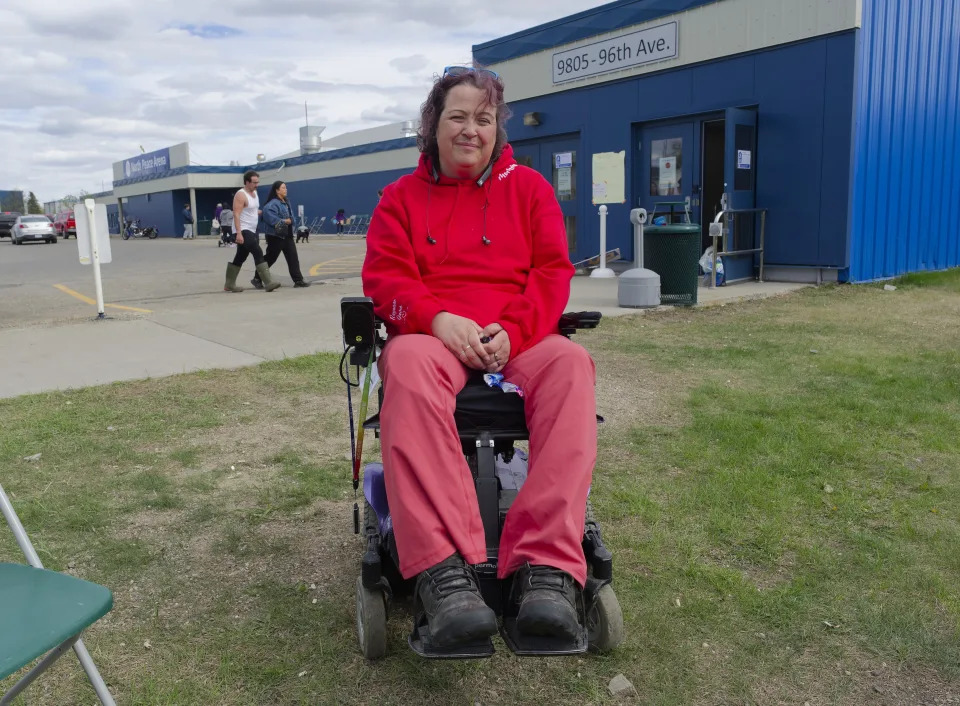
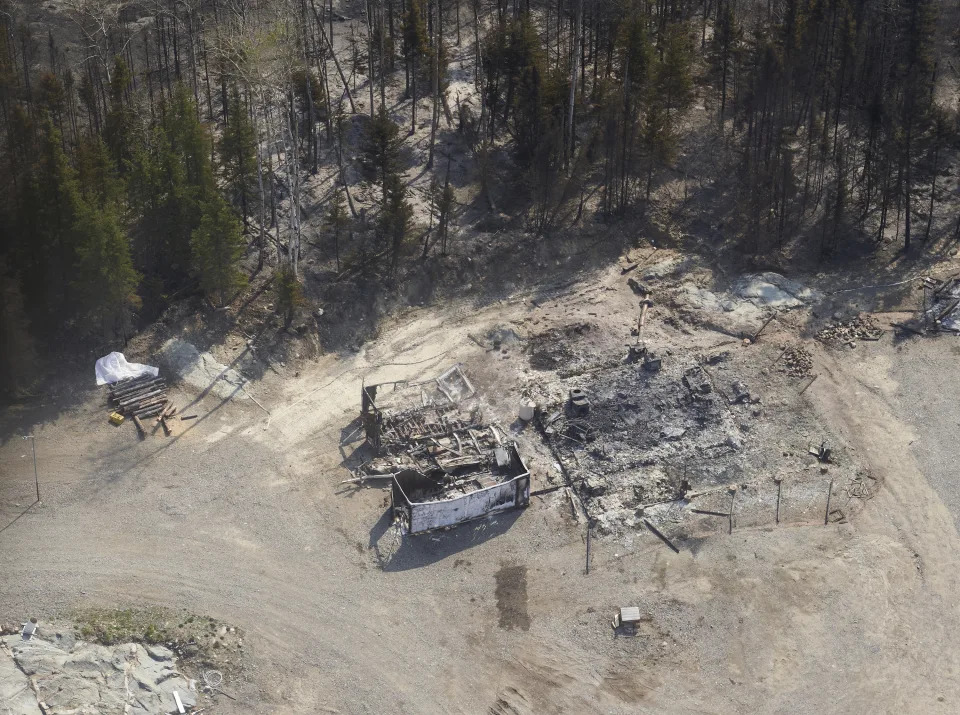
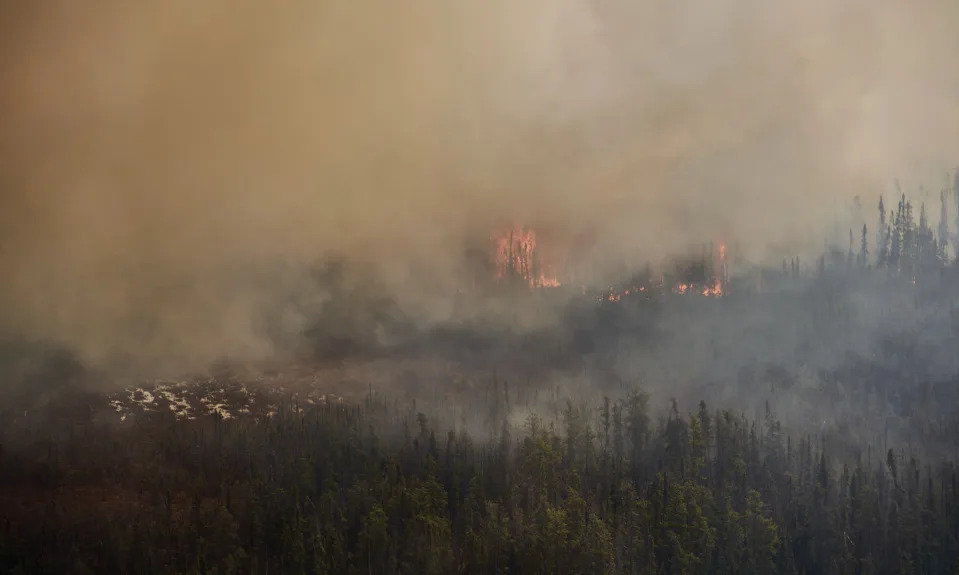

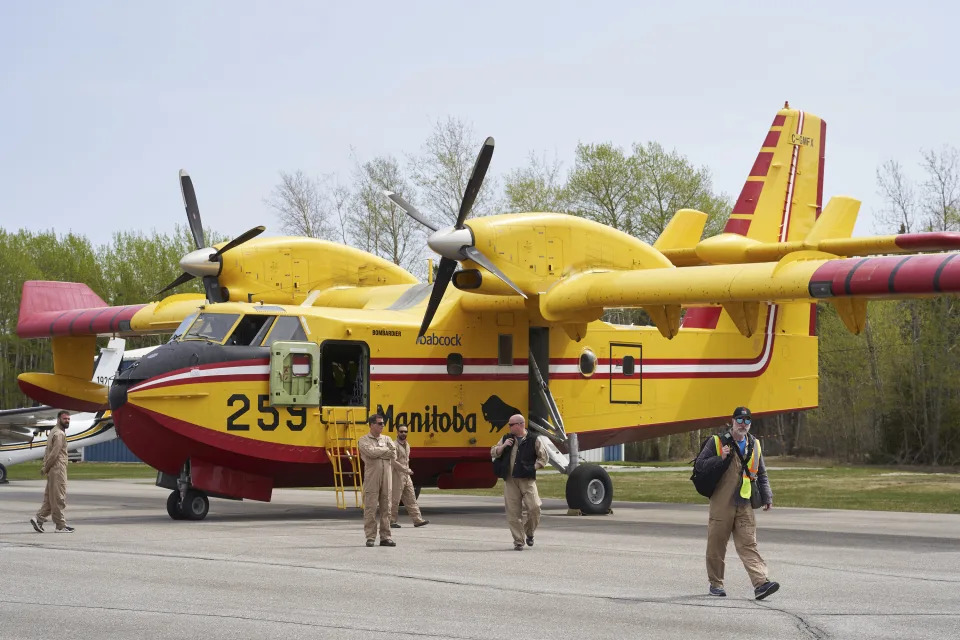
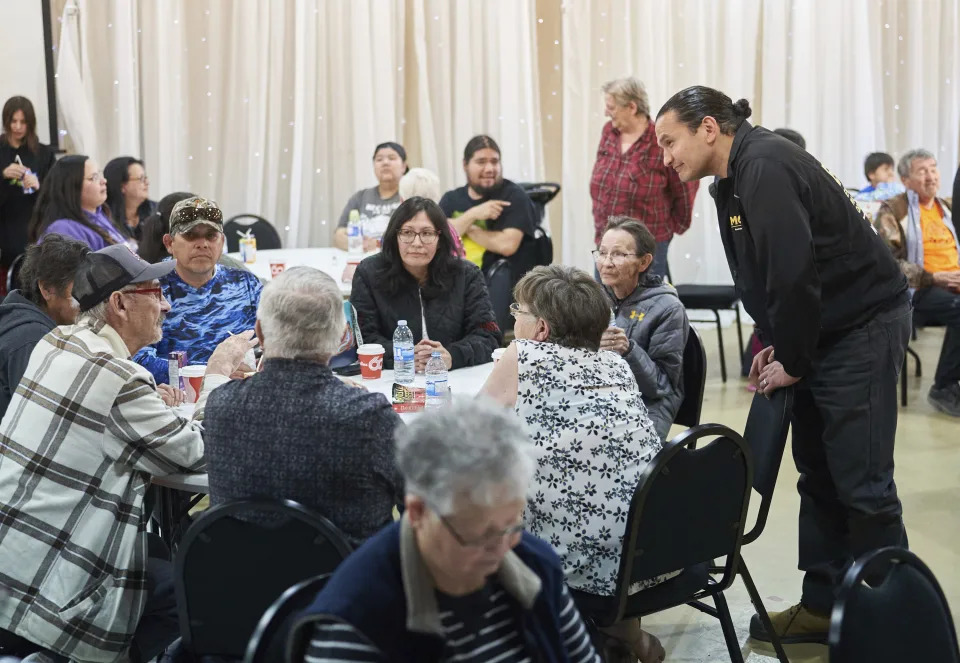
Manitoba Premier Wab Kinew speaks with evacuees from the Cranberry Portage area at the reception centre at the Wescana Inn in The Pas, Man., as wildfires burn in northern Manitoba, Tuesday, May 14, 2024.
(David Lipnowski/The Canadian Press via AP)
VANCOUVER, British Columbia (AP) — Hundreds of residents in four neighborhoods in the southern end of Canada’s oil sand hub of Fort McMurray, Alberta, were ordered to evacuate with a wildfire threatening the community, authorities said Tuesday.
The Rural Municipality of Wood Buffalo said residents in Beacon Hill, Abasand, Prairie Creek and Grayling Terrace needed to leave by 4 p.m.
An emergency evacuation warning remained in place for the rest of Fort McMurray and surrounding areas.
The rural municipality said the residents in the four neighborhoods were being ordered out to clear room for crews to fight the fire, which had moved to within 13 kilometers (8 miles) of the city.
Fort McMurray has a population of about 68,000, and a wildfire there in 2016 destroyed 2,400 homes and forced more than 80,000 people to flee.
“It’s very important for me to know that this fire activity is very different than the 2016 Horse River wildfire. We have an abundance of resources and we are well positioned to respond to this situation,” Regional Fire Chief Jody Butz said.
Suzy Gerendi, who runs the dessert shop in the Beacon Hill neighborhood, said she was already packed up when the evacuation order came down. Gerendi lived in Beacon Hill when fire overtook it in 2016.
She immediately began the drive towards Edmonton, Alberta with her three dogs.
“It’s very, very dark and orange,” Gerendi said. “It brings up some memories and it’s not a good feeling.”
Residents were also dealing with heavy smoke and ash.
“It’s dark. The smoke is everywhere,” said resident Else Hoko.
Hoko picked up her two sons from school in Abasand after receiving the evacuation order. She had also fled in 2016.
“I’m so stressed,” she said, adding that she’s praying for rain.
The Beacon Hill and Abasand neighborhoods saw serious losses in 2016.
The current fire has grown to about 110 square kilometers (42.5 square miles) and remains out of control.
Josee St. Onge, an Alberta Wildfire information officer, said wind is pushing the fire toward the community.
She said crews have been pulled from the fire line for safety reasons, and air tankers and helicopters continue to drop water and retardant on the “active edges.”
“Unfortunately, these are not favorable winds for us, and the fire will continue to advance towards the town until we see a wind shift,” she said.
More than 230 wildfires were burning across western Canada, most of them in British Columbia, where about 130 were counted, officials said.
In the northeast of the neighboring province of British Columbia, areas subject to mandatory evacuation increased, with the latest order Monday for Doig River First Nation and the Peace River Regional District as a fire threatened nearby.
Forecasts on Tuesday called for wind that could blow a growing wildfire closer to Fort Nelson. Emergency workers had been phoning as many of the estimated 50 residents still in town and urging them to go.
The British Columbia Wildfire Service said the blaze had grown to 84 square kilometers (32 miles). On Monday, it was about 53 square kilometers (21 miles) in size. A photo by the service shows the billowing blaze spreading in a vast wooded area.
The community of about 4,700 and the neighboring Fort Nelson First Nation have been under an evacuation order since Friday.
Northern Rockies Regional Municipality Mayor Rob Fraser said one drawback of the evacuation is the challenge for essential staff, including firefighters, to find food.
“This is really going to be weather dependent, and so far the weather has been holding with us,” Fraser said of the wildfire in a video posted to Facebook.
In 2023, Canada experienced a record number of wildfires that caused choking smoke in parts of the U.S. and forced more than 235,000 Canadians to evacuate their communities. At least four firefighters died.
VANCOUVER, British Columbia (AP) — Hundreds of residents in four neighborhoods in the southern end of Canada’s oil sand hub of Fort McMurray, Alberta, were ordered to evacuate with a wildfire threatening the community, authorities said Tuesday.
The Rural Municipality of Wood Buffalo said residents in Beacon Hill, Abasand, Prairie Creek and Grayling Terrace needed to leave by 4 p.m.
An emergency evacuation warning remained in place for the rest of Fort McMurray and surrounding areas.
The rural municipality said the residents in the four neighborhoods were being ordered out to clear room for crews to fight the fire, which had moved to within 13 kilometers (8 miles) of the city.
Fort McMurray has a population of about 68,000, and a wildfire there in 2016 destroyed 2,400 homes and forced more than 80,000 people to flee.
“It’s very important for me to know that this fire activity is very different than the 2016 Horse River wildfire. We have an abundance of resources and we are well positioned to respond to this situation,” Regional Fire Chief Jody Butz said.
Suzy Gerendi, who runs the dessert shop in the Beacon Hill neighborhood, said she was already packed up when the evacuation order came down. Gerendi lived in Beacon Hill when fire overtook it in 2016.
She immediately began the drive towards Edmonton, Alberta with her three dogs.
“It’s very, very dark and orange,” Gerendi said. “It brings up some memories and it’s not a good feeling.”
Residents were also dealing with heavy smoke and ash.
“It’s dark. The smoke is everywhere,” said resident Else Hoko.
Hoko picked up her two sons from school in Abasand after receiving the evacuation order. She had also fled in 2016.
“I’m so stressed,” she said, adding that she’s praying for rain.
The Beacon Hill and Abasand neighborhoods saw serious losses in 2016.
The current fire has grown to about 110 square kilometers (42.5 square miles) and remains out of control.
Josee St. Onge, an Alberta Wildfire information officer, said wind is pushing the fire toward the community.
She said crews have been pulled from the fire line for safety reasons, and air tankers and helicopters continue to drop water and retardant on the “active edges.”
“Unfortunately, these are not favorable winds for us, and the fire will continue to advance towards the town until we see a wind shift,” she said.
More than 230 wildfires were burning across western Canada, most of them in British Columbia, where about 130 were counted, officials said.
In the northeast of the neighboring province of British Columbia, areas subject to mandatory evacuation increased, with the latest order Monday for Doig River First Nation and the Peace River Regional District as a fire threatened nearby.
Forecasts on Tuesday called for wind that could blow a growing wildfire closer to Fort Nelson. Emergency workers had been phoning as many of the estimated 50 residents still in town and urging them to go.
The British Columbia Wildfire Service said the blaze had grown to 84 square kilometers (32 miles). On Monday, it was about 53 square kilometers (21 miles) in size. A photo by the service shows the billowing blaze spreading in a vast wooded area.
The community of about 4,700 and the neighboring Fort Nelson First Nation have been under an evacuation order since Friday.
Northern Rockies Regional Municipality Mayor Rob Fraser said one drawback of the evacuation is the challenge for essential staff, including firefighters, to find food.
“This is really going to be weather dependent, and so far the weather has been holding with us,” Fraser said of the wildfire in a video posted to Facebook.
In 2023, Canada experienced a record number of wildfires that caused choking smoke in parts of the U.S. and forced more than 235,000 Canadians to evacuate their communities. At least four firefighters died.
No comments:
Post a Comment